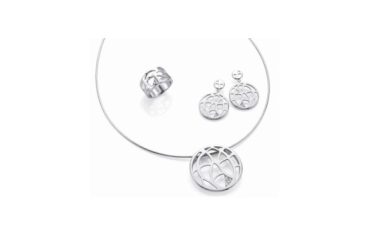a new wave of designers is using markets to generate interest in their products and kick start their businesses. rachael gavin speaks to three designers and the brains behind the markets they sell at.
at any given weekend across australia crowds of people flock to local halls, abandoned warehouses and parks to buy unique products not often found in shops, designed by locals and made at home. the concept is centuries old. from ancient greece and rome to medieval times people have sold their products in the village square. but no longer is it our only means of purchasing food and household goods, it is now the launch pad for emerging designers.
popularity continues to grow with new markets that have a specific focus on designers, popping up all over the country to serve a growing demand for australian products with a quirky edge. and designers are more than happy to supply their wares and use markets as a platform to boost their fledgling businesses.
lamp, candle and stationary creator jacqueline wallace of redberry design began her company by selling to colleagues, family and friends, but once she started trading at markets about a year ago she never looked back. she says the response to her range of origami art and bright, quirky paper objects was overwhelming.
“the first market i attended was the finders keepers market so not knowing what to expect it was a bit overwhelming, extremely busy,” she says.
“we sold out of stock, it was a crazy event and really fantastic feedback which i guess spurred me to push it on further from there.”
an obsession with paper and an innate desire to create led wallace to start her own range of products.
“i’ve always had an obsession with creative papers and different types of origami and that sort of thing. i found it hard to find origami papers that i really liked so i started designing my own and printing them and producing different origami and thought they’d look great as mobiles and sort of went from there.
the part-time design lecturer attends about six markets a year depending on her other work commitments including a graphic design business and where she is up to with wholesale and retailer orders. wallace also has a website but says at this stage it’s not her main focus.
“at the moment [online is not] set up to be the prime part of my business but i do get orders there. it’s something that we’re working to develop further and it’s something that now that we’re a little more established we hope to develop our presence a bit more.”
wallace believes markets are the perfect forum to help a designer refine their product.
“the interaction and immediate feedback on your product is a great way of establishing what’s going to work and what’s not. i may come up with something i think is great but then put it out there and find [doesn’t do] so well, or something that i think is not going to go well will go great.
“it also helps with things like popular colour palettes and also it’s a great satisfaction getting that feedback directly from people.”
julie nichols, creative director of handmade canberra, a market which wallace regularly attends, agrees.
“nothing beats being able to talk and interact with your customer,” nichols explains.
“at a market they can see what other designers are doing… getting new and fresh and creative ideas… merchandising ideas but most of all they can be interacting with their customers.
“of course they can make the sale and make money which is great, but if they’re really switched on they can be getting customer feedback to reiterate that the colours they’ve produced it in or the size they’ve produced it in or what they’re doing is what their customer is after,” she says.
according to nichols, what makes redberry design so successful at her market is great merchandising, quality, unique products and outstanding customer service.
“they have the most fabulous products that they merchandise extremely well. so in a room of 120 designers that are just fabulous they really stand out as just having eye catching displays.
“they’ll always look their customer in the eye and they’ve always got a smile on their face—they’re just there to engage the customer. their product is well merchandised, priced for what it is and it’s not something that you find anywhere else.”
handmade canberra burst onto the scene in 2008 after nichols, who is a milliner by trade, moved back to the act and found there were no design concept markets like those she’d seen around the rest of australia.
“i thought being somebody who was creative and did handmade products myself you tend to get lost at a normal everyday type market, the quality can sort of get lost, so the whole point behind handmade was to have a design concept market where people were making their own product but it was a high quality product as well,” she says.
the market rose to popularity very quickly. it started with just 36 stalls and 2500 visitors, but now more than 100 stalls and up to 10,000 people attend the quarterly event.
now that handmade canberra is established nichols says her only problem is working out how to satisfy both customers and stall holders.
“there’s a big challenge in keeping everyone that does come along happy and keeping the designers happy and that ‘yes you’ve come along, you’ve supported the market but i don’t have enough room for everybody’.”

when helen bremner of ensparkle ceramics decided to start selling at markets she simply took a chance despite an initially small range of products and competition from hundreds of other applicants.
“i imagined in my head that markets were just something that you paid your money for and you had your stall, when i realised nearly everything is curated now,” she says.
“i took some pictures, explained a little bit behind the business, how my stuff is made and was accepted.
“obviously then i had to design a bit more of a product range and stall but with the application process i was throwing caution to the wind to see if i would even be accepted and i was delighted to be accepted.”
bremner’s range of personalised ceramic plates, mugs and jugs came out of a love of the art form. after moving to australia with her family from scotland in 2008, the former french teacher took up ceramics classes as a way to integrate herself into the community.
she gave the pieces she’d made to her friends and family but when people started asking her to make them she realised there was a business in it.
ensparkle ceramics launched in late 2009 with bremner selling online and at matilda’s market in canberra. she says the experience was amazing.
“i didn’t know what to expect as i was new to the game, new to selling giftware [and] fairly new to ceramics. i did matilda’s market in canberra, that was my first market and i was blown away it was just fantastic. the response was really, really good. i think i just got lucky and there wasn’t anything out there like what i was making.”
market selling is imperative to bremner’s business. without it, she says, customers wouldn’t be able to fully appreciate the physicality of her products or give her the feedback she needs to improve and renew her work.
“it’s very hard to photograph ceramics; they’re shiny, they’re glazed, people can’t appreciate the weight that goes into them and the quality.
“i think a lot of people imagine they are simply surface decorations that are on the pieces and in fact each piece requires three coats, it’s twice fired, glazed. a lot of man-hours go into that and it’s fairly difficult to capture in a photograph.
“customers are always pleasantly surprised at the weight of the pieces, how sturdy they feel. it’s a sensory experience,” bremner explains.
she also says market selling fuels her online trade.
“a lot of people will come and see you at markets but perhaps it’s not the right time; baby hasn’t been born yet, they don’t know what they’re having, christening date hasn’t been set, those sorts of things. so they take your card, they go away and come back to you and they find you wherever or they pass on the information.
“vice versa people will check you out online but they want to check things out in the flesh, because i’m not in retail stores they can’t pop into their local gift shop and see what things look like. so i would say both work well together, they have their advantages and they definitely feed each other.”
the finders keepers market co-director sarah thornton says bremner’s such a successful stall holder because she has a unique spin on an old art form, while bremner appreciates the community thornton and her business partner brooke johnston have created.
it’s amazing, purely in terms of the talent that they find, you just find products there that you wouldn’t see anywhere else and the people at the market are just really passionate about finding things, sourcing things you’re not going to find anywhere else,” bremner says.
started in 2008, finders keepers is a design concept market. when thornton and johnston held their first event they had few competitors, but they obviously tapped into something because the number of similar events has since boomed to about 50.
thornton says the market began in sydney but opened up into brisbane and melbourne when they realised designers were travelling a long way to attend. thousands of customers flock to all three venues, proving that there really is a desire for unique quality products.
“when we started there wasn’t any sort of craft revival [and] it was still a bit daggy,” says thornton.
“it really has blown up since we first started three or four years ago and its hard to say if that’s going to be the future of design or if people are going to get bored of that and move onto something else, but i think a lot of people have found a genuine love in handmaking stuff so it might be here to stay.”
the finders keepers market gets hundreds of applications from designers for each market but only about 60 are picked to sell their products. to be selected, thornton says a good designer needs to have heart and personality in their work as well as being original.
“we like to see a bit of character behind the design as well. we want to see where their inspiration comes from, if it comes from somewhere unique and not just another designer or general thing as well their intentions, if it’s just to make money rather than a love of creating or fashion,” thornton says.
 for rodney onken of australian wattle woodcraft, markets were a way he could keep running his business when he found he couldn’t supply the amount of stock retailers wanted at the price they were asking.
for rodney onken of australian wattle woodcraft, markets were a way he could keep running his business when he found he couldn’t supply the amount of stock retailers wanted at the price they were asking. “we looked for alternative ways of continuing our business, so the most direct way we could get a little bit more money out of the product was to sell at markets and that’s what we started doing,” he says.
onken and his wife sandra, or the ‘chopping board people’ as nicknamed by market regulars, have been trading at markets in victoria for the past 15 years attending an average of 80 markets a year, but the pair has recently cut back to 50.
the company is well renowned for its cutting boards made from tasmanian blackwood and camphor laurel timber. boards are available in both straight and checker grain with an optional metal handle.
when the couple first set up their market stall, patronage was quite low. but they’ve since developed a solid following.
“the initial result was fairly slow, but markets quite often have a regular clientele and after a period of time we found we built up the clientele. those people may not always buy more than one product for themselves but they quite often bring a friend and they quite often buy gifts for other people.
“initially it was fairly quiet and we were a bit disillusioned but as people see you there every week they gain confidence.”
australian wattle woodcraft was created when onken, a furniture maker by trade, couldn’t keep up with local companies who were sending their designs to china to be made.
“we couldn’t compete with that so i looked at a product i could make with the machinery that i had and the expertise that i had and at that time there was only one other maker in the business,” onken says.
the joy of selling at markets for onken is the interaction with customers. he says it’s all about feedback, which means a designer can give in to demand quicker than a product sold in a retail store.
“the advantage is that you get to talk face to face with the person buying the product. from that you gauge what they want and you adjust what you make to what the customer wants,” he explains.
“it makes your range fairly flexible. you can change what you want to suit the customer so as fashions change you can change, whereas if you’re supplying to a retail operation it’s fairly hard to change mid-stream.”
onken’s preferred markets to sell at are those run by craft markets australia (cma).
“we follow cma mainly because they’ve got a good reputation, they advertise and they bring in the customers.”
victorian based cma has been operating for 37 years after an idea emerged from a dinner party conversation between four couples who wanted a space to barter goods they’d produced or grown themselves.
cma general manager allison dillon’s parents were among the couples. she says designers must follow their make it, bake it, grow it, breed it philosophy and make their product in australia, though there is an allowance for work done to objects from overseas, such as a t-shirt, in order to keep up with competition.
“it was just sort of an idea when they first started,” she says. “we still say along (those) lines because our idea is to support small cottage industry businesses.
“if someone applies we ask them questions about their involvement in the product and if they’re designers and send it overseas we don’t accept that. we want australian made products where the person is fully involved in the making, has the knowledge of the product and then can pass that onto the customer. so that’s our philosophy and we’ve always stuck to that,” she says.
after almost four decades of markets cma is able to chart the rise and fall of design trends. dillon explains a few years ago products that had a modern appearance with canvas works particularly popular. currently vintage and retro inspired products are the in thing, but the trend can depend on where the designer sells.
“vintage is definitely the in thing at the moment and probably two or three years ago it was the canvas art and a more modern look and now it’s sort of disappeared,” says dillon.
“it goes sort of with what the trend in homes is [and] it depends on the area as well. we find when we go to a particular area like healesville it’s more country so you still see the country art or country designs doing really well in the area but coming towards flemington the more modern sort of stall seems to do quite well.”
when it comes to staying power, designers and consumers can’t go past the experience of cma and dillon believes the organisation has what it takes to go the distance.
“we’ve shown that you can last for 37 years and… hopefully last another 37 years.”







